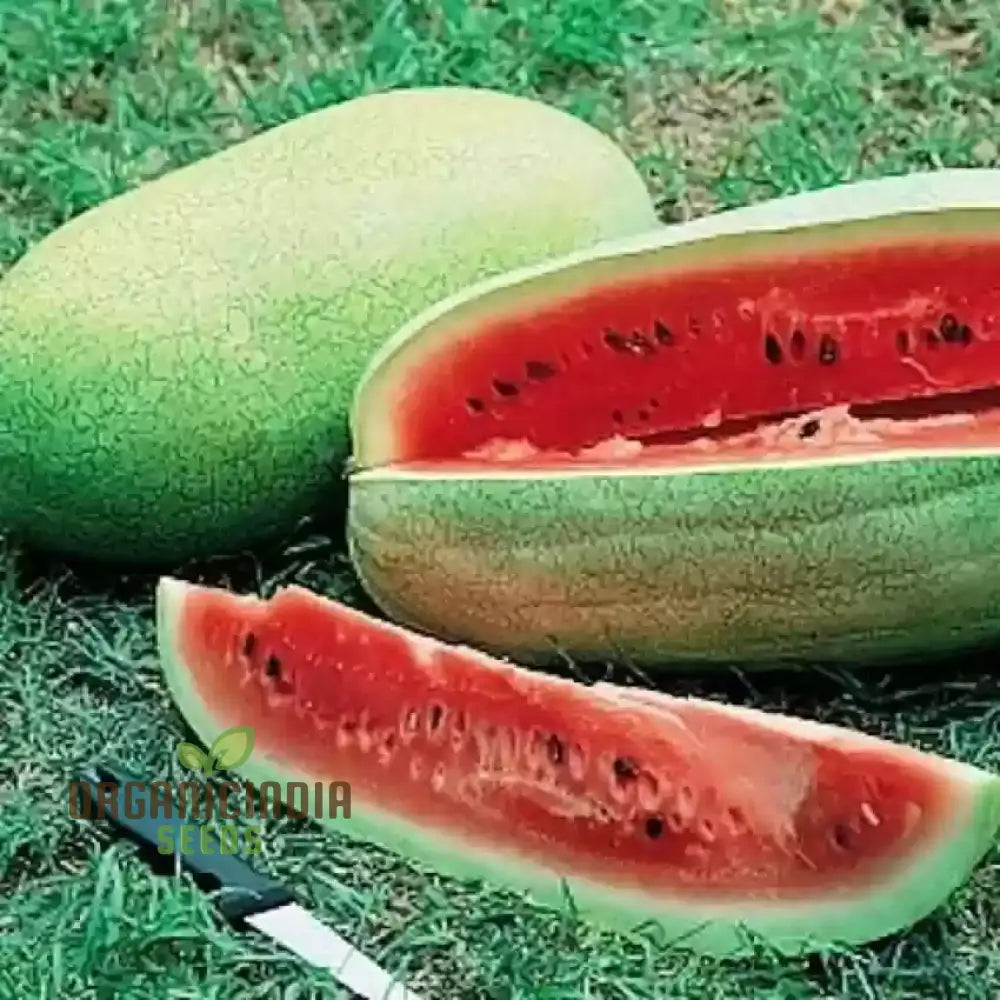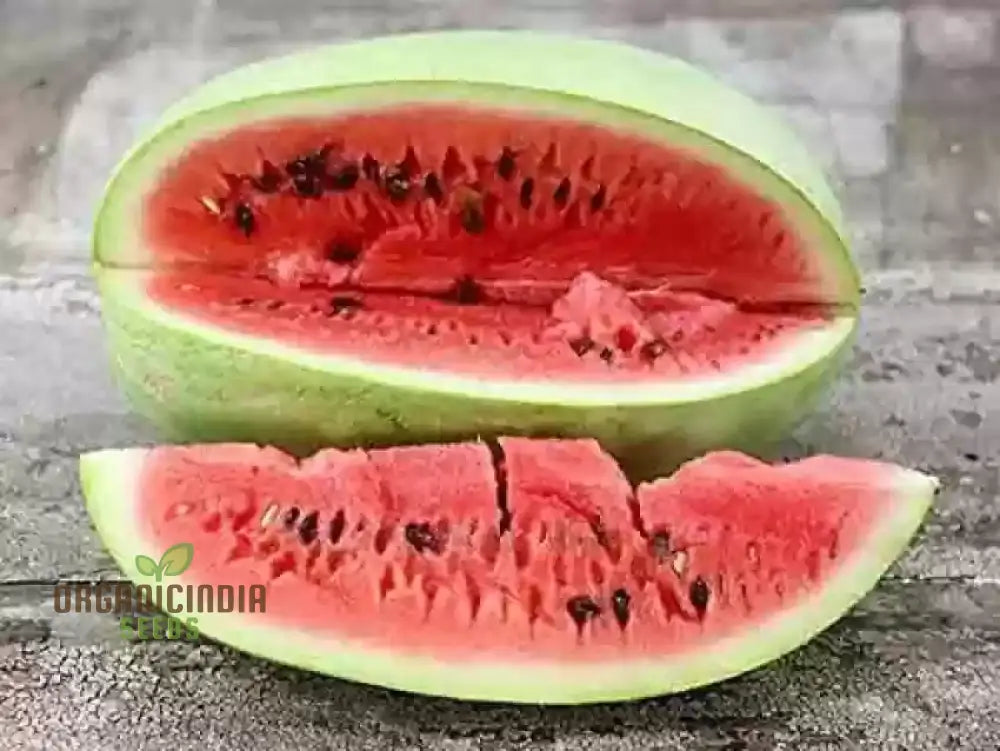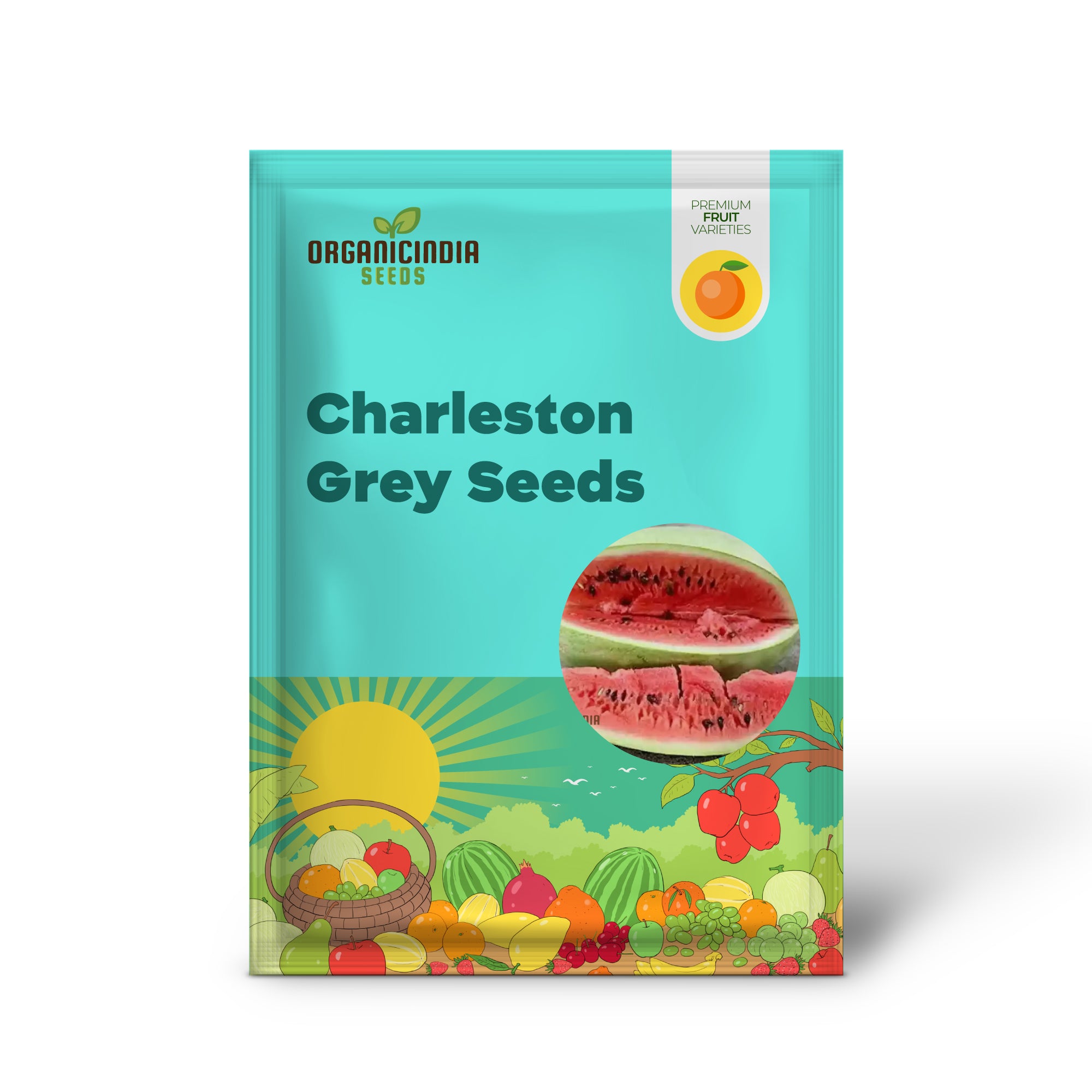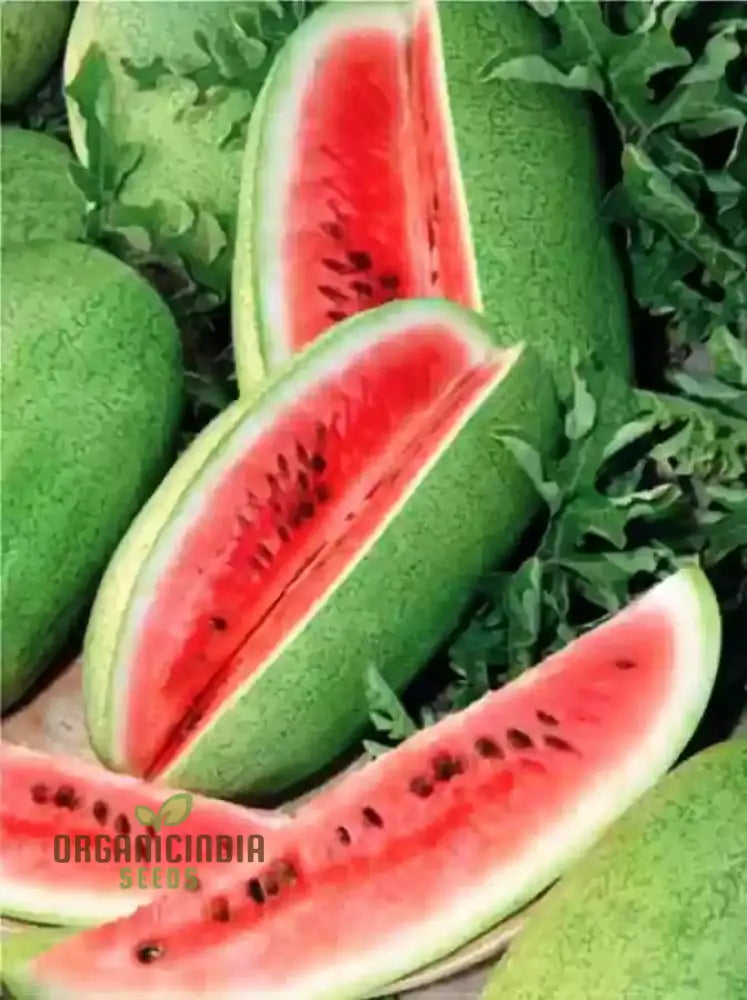






Free Shipping
Safe & Secure Payments
Classic Heirloom Variety: Charleston Grey is a trusted watermelon variety known for large, sweet fruits and consistent yields.
High-Yielding & Productive: Each plant produces multiple melons weighing 20–35 lbs.
Sweet, Juicy Flesh: Firm, deep red interior with crisp texture and delicious flavor.
Disease Resistant: Resistant to Fusarium wilt and anthracnose for healthier crops.
Heat Tolerant: Ideal for warm, sunny climates and long growing seasons.
Excellent Storage Life: Thick rind offers better protection and longer shelf life.
Perfect for Home Gardens & Farms: Great for backyard growers and small-scale gardeners.
Scientific Name: Citrullus lanatus var. Charleston Grey
Common Name (US): Charleston Grey Watermelon
Plant Type: Warm-season annual fruit vine
Seed Type: Heirloom / Non-GMO / Untreated
Fruit Shape: Oblong, cylindrical
Fruit Weight: 20–35 lbs (9–16 kg)
Flesh Color: Deep red, crisp, and sweet
Rind Color: Light green-gray with smooth skin
Days to Germination: 7–10 days
Days to Maturity: 85–95 days
Germination Temperature: 75–90°F (24–32°C)
Soil Type: Sandy or loamy, well-drained soil enriched with compost
Soil pH: 6.0–7.0
Sun Exposure: Full Sun (6–8 hours daily minimum)
Water Requirements: Moderate; deep watering weekly
USDA Hardiness Zones: 3–10
Spacing: 36–48 inches between plants, 6–8 feet between rows
Vine Length: 8–10 feet (sprawling vine growth)
Pollination: Open-pollinated; attracts bees and pollinators
Maintenance Level: Moderate
Soil Preparation: Prepare rich, well-drained soil mixed with compost or aged manure.
Sowing Depth: Sow seeds ½ inch deep in warm soil after all danger of frost has passed.
Germination: Maintain soil temperature between 75–90°F for 7–10 days until sprouting.
Thinning: Keep the healthiest seedling per hill, spaced 3–4 feet apart.
Watering: Water deeply and consistently during fruit formation; reduce watering before harvest.
Fertilizing: Apply an organic, phosphorus-rich fertilizer during flowering and fruiting stages.
Pollination: Encourage bees and beneficial insects for better fruit set.
Harvesting: Harvest when tendrils near the fruit stem dry and the underside turns creamy yellow.
Choose options




